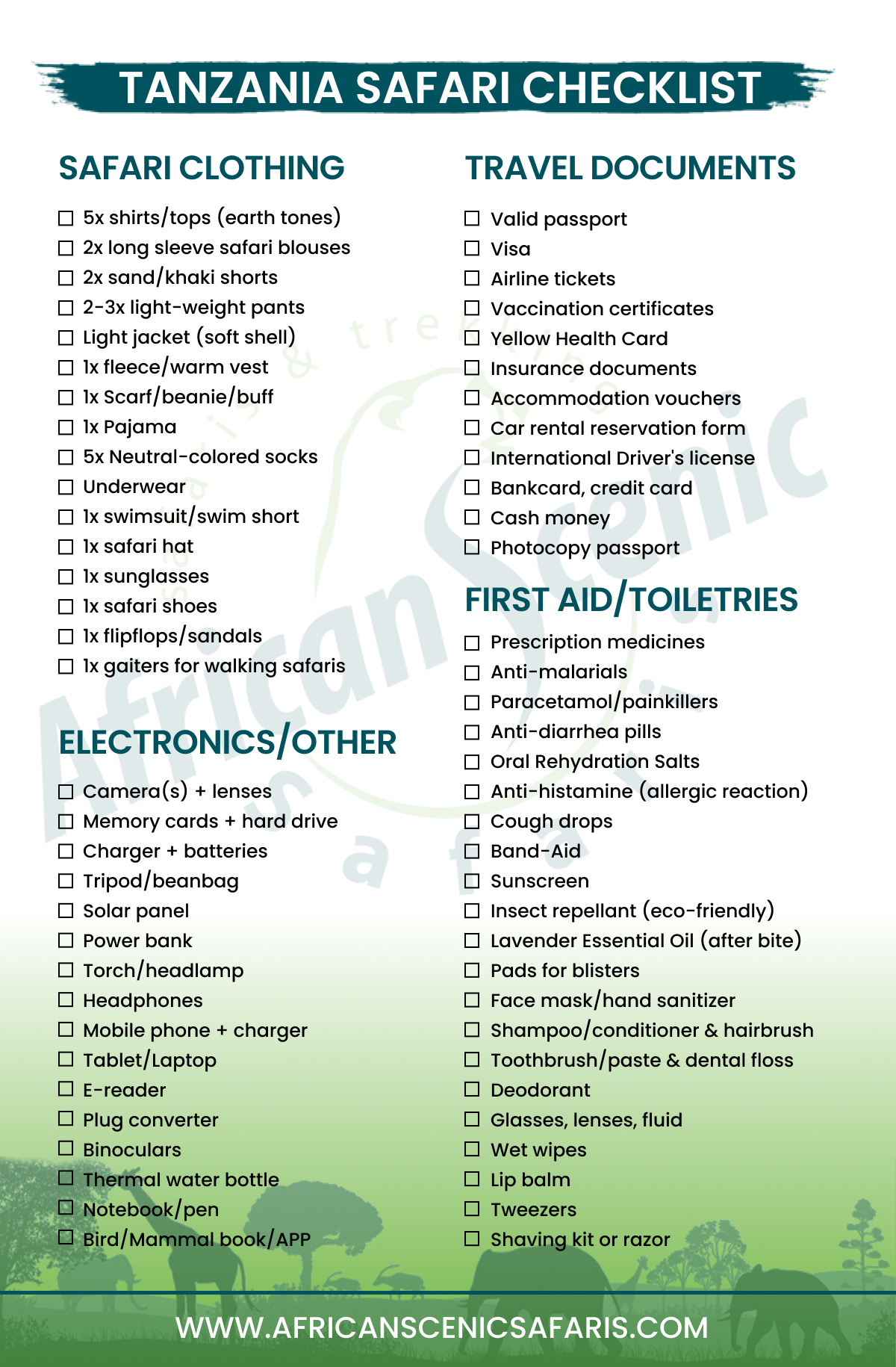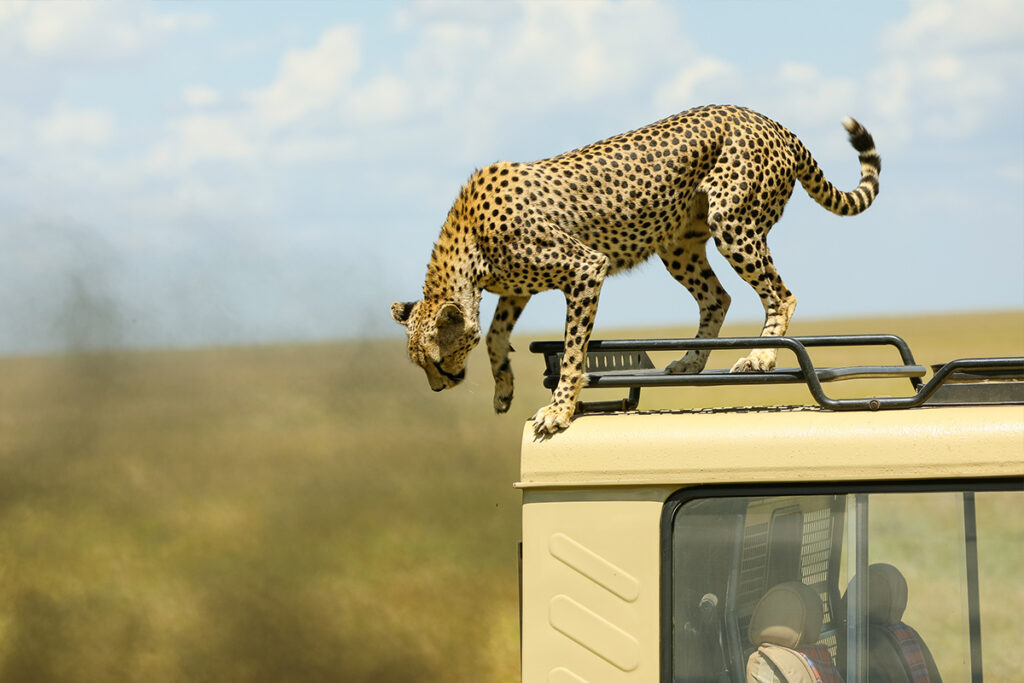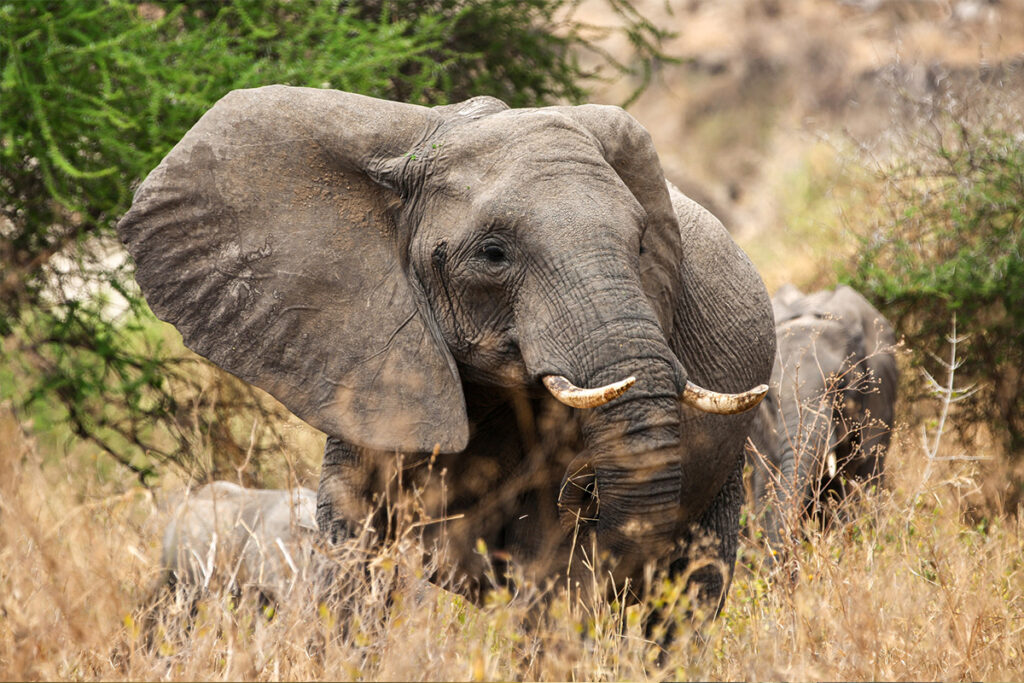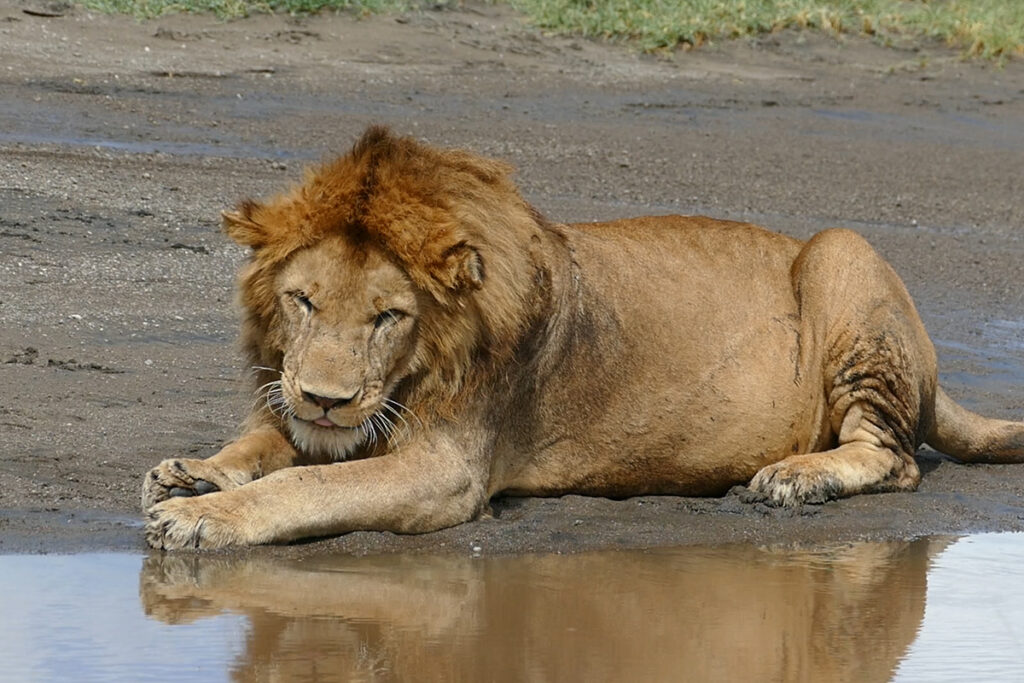It’s fascinating to think that the way you pack can make or break a safari adventure in Tanzania. Picture navigating the breathtaking Serengeti, when you suddenly realize you’re missing essential gear. The right packing list ensures an experience that’s both enjoyable and stress-free.
Historically, safaris required a comprehensive array of equipment, but modern technology has streamlined our needs. For instance, 85% of travelers now include lightweight, quick-dry clothing in their bags, reducing bulk and increasing comfort. Including items such as insect repellent, a good camera, and appropriate footwear can dramatically enhance your journey.

Tanzania Safari Packing List: Essential Items
Embarking on a Tanzania safari requires careful packing to ensure you have a comfortable and enjoyable experience. Clothing should be lightweight and breathable to handle the heat. Neutral colors like khaki and olive are ideal to blend with the environment. According to this post, packing layers is important to accommodate the cooler mornings and evenings. Don’t forget a wide-brimmed hat to protect against the strong sun.
Footwear plays a crucial role in a safari adventure. Having sturdy boots is recommended for walking safaris and rocky terrains. For more relaxed times in camp, a comfortable pair of sandals comes in handy. It’s advisable to break in your shoes well before the trip to avoid blisters. According to here is the post, closed shoes also help prevent insect bites.
Given the adventurous nature of safaris, having the right gear can make all the difference. Binoculars are a must for viewing wildlife from a distance. A quality camera with extra memory cards ensures you capture unforgettable moments. Helpful gadgets like portable chargers for electronic devices should also be on your list. Don’t overlook insect repellent to keep the bugs at bay.
A small first-aid kit can be a lifesaver during your safari. Pack basic items like band-aids, antiseptic wipes, and any personal medications. Always have a reusable water bottle to stay hydrated in the heat. Some travelers carry snacks for long drives between game parks. It’s wise to bring a lightweight backpack for daily excursions, ensuring you have all essentials easily accessible.
Clothing for Tanzania Safari
Choosing the right clothing for a Tanzania safari is key to enjoying your adventure. Comfort is essential, especially when you’re spending long days exploring the wilderness. Lightweight fabrics like cotton and linen keep you cool in the African sun. Layering is your best bet, allowing you to adjust to varying temperatures throughout the day. Include a lightweight jacket or sweater for cooler mornings and evenings.
Wearing the right colors can enhance your safari experience. Stick to neutral tones like beige, olive, and light brown to blend into the natural environment. Bright colors can scare away animals, which is not ideal for wildlife viewing. Camouflage is often advised against as it can be associated with military personnel in some regions. A scarf or bandana can be a versatile addition, providing protection from dust.
Your safari clothing list should also consider practical items for personal comfort. For example, clothes with built-in UPF protection help shield your skin from harmful sun rays. Consider zip-off pants that easily convert into shorts, offering flexibility during the day. Shirts with button-down collars are a good choice, as they can be adjusted for airflow while keeping your neck protected from sunburn.
When preparing for your safari, don’t forget accessories that complete your outfit. A broad-brimmed hat is vital for keeping the sun off your face and neck. Sunglasses with UV protection shield your eyes from the intense sun. Ensure your clothing has enough pockets for small essentials like a map or a notepad. Carrying a small day pack can help hold items like sunscreen and a water bottle for quick access.
Footwear for Tanzania Safari
The right footwear is essential for a safari in Tanzania. Hiking boots or trail shoes provide the support needed for uneven terrain. Boots should be waterproof and breathable, ensuring comfort across different walking conditions. It’s important to choose shoes that have sturdy soles to protect against stones and thorns. A good fit is crucial to prevent blisters or discomfort during long treks.
During your safari, you’ll encounter various landscapes, demanding versatile footwear. Robust boots are perfect for bush walks and rocky paths, while lighter shoes suffice for days spent in the safari vehicle. If you plan to explore camps or lodges, a pair of comfortable sandals allows your feet to breathe. Consider footwear with neutral tones to blend with the surroundings. Avoid bright colors that might attract unwanted attention from insects.
Breaking in new shoes before your trip can save you from painful blisters. Wear them for short walks around your neighborhood to ease your feet into the new support system. Make sure to pack extra laces, in case of wear and tear on your adventure. Traveling with a shoe-cleaning kit helps maintain your footwear’s condition. Keep them fresh by airing them out at night and using moisture-absorbing inserts.
Your safari packing list should reflect activities planned to ensure appropriate footwear. Whether you’re planning safari walks or laid-back campsite evenings, having the right footwear will enhance your experience. It’s wise to have socks made from moisture-wicking materials to keep feet dry and comfortable. Footwear should also be easy to clean, keeping dust and sand at bay. Planning well means more time enjoying the breathtaking safari views.
Gear for Tanzania Safari
Having the right gear can significantly enhance your safari experience. A reliable pair of binoculars allows you to observe wildlife from a safe distance. Opt for a model that’s both compact and lightweight, making it easy to carry around. Cameras are another crucial tool for capturing the beauty of Tanzania’s landscapes. Ensure you bring additional memory cards and batteries to avoid running out during an exciting moment.
Navigating through the safari requires preparation for every situation. A good backpack is essential for carrying daily necessities such as water, a first-aid kit, and sunscreen. Choose one with multiple compartments to organize your gear efficiently. Consider a UV-protection water bottle to keep hydrated under the hot sun. This reduces the need for single-use plastic bottles, aligning with eco-friendly practices.
Electronic gear should include portable chargers to keep your devices powered throughout the day. Solar-powered chargers can be particularly effective, especially in remote areas without electricity. Noise-canceling headphones might be beneficial for long rides between sites. They can provide some peace and downtime amidst the excitement. A small flashlight, or a headlamp gives you vision for night hikes or walks.
Protecting yourself from the elements is something you can’t overlook. A wide-brimmed hat shields your face and neck from the intense sun. Sunglasses with UV protection are a must to guard your eyes. Insect repellent helps deter bugs, especially in the evenings. Light, breathable gloves can be useful if you’re holding onto cold metal or dusty areas.
Personal care items should not be forgotten when planning your gear. Wet wipes can serve many purposes, including quick clean-ups on long excursions. Travel-sized toiletries ensure you maintain hygiene without overpacking. A basic first-aid kit packed with band-aids, antiseptic wipes, and pain relief tablets prepares you for small accidents. Packing earplugs can help in getting good rest, even with noise around you.
With all these items, you can focus on making the most of your safari in Tanzania. Ensuring you have the right gear means experiencing the wonders of wildlife and nature more comfortably. Each piece of gear serves a purpose in enhancing your journey, allowing you to embrace the beauty and adventure that awaits. Your planning will pay off as you enjoy the spectacular sights and sounds.
The Importance of Carrying the Right Items
Carrying the correct items is vital for a successful Tanzania safari. The right gear ensures you’re prepared for different situations, whether it’s a sudden rain shower or a long hike. Quality rain gear keeps you dry while exploring lush habitats. A strong pair of binoculars helps in spotting distant wildlife, transforming your viewing experience. Without these essentials, you risk missing out on the safari’s thrills.
Being well-prepared can enhance both comfort and safety. Packing sunscreen and a wide-brimmed hat protects you from sunburn during midday hours. Having a first-aid kit is essential for treating minor cuts or insect bites. A reusable water bottle helps you stay hydrated, especially in the heat. These items combined can make or break your safari journey.
Planning your packing wisely means considering what’s lightweight yet functional. Opt for clothing that dries quickly to adapt to sudden weather changes. Compact, multipurpose tools save space while providing utility in unexpected situations. It’s also helpful to bring a lightweight travel blanket for chilly morning drives. Minimalist packing allows for greater flexibility when moving from one location to another.
Proper packing also means you’re ready to capture unforgettable moments. A good camera and extra memory cards keep you snapping away as you witness Tanzania’s breathtaking landscapes. A digital guide or app about the local flora and fauna can enrich your understanding of what you’re observing. A sturdy backpack organizes your essentials while exploring lush terrains. Ensuring everything is in place enhances the overall experience.
Importantly, choosing the right items reflects environmental awareness. Reusable items like bottles and eco-friendly toiletries reduce plastic waste. Selecting biodegradable products ensures you leave no trace in the beautiful landscapes. Awareness of weight restrictions on tours advances responsible tourism, conserving the area’s natural beauty. With mindful preparation, you keep the environment as stunning as you found it.
How to Pack Efficiently for a Safari in Tanzania
Packing efficiently for a safari in Tanzania starts with choosing the right luggage. Soft-sided bags or duffel bags are preferable over hard-shell suitcases. They fit easily into safari vehicles and smaller planes. Limit your luggage to essential items to avoid overpacking. Remember, most safari lodges offer laundry services.
Create a packing list to stay organized. Focus on versatile clothing that suits different weather conditions. Layering is key, with breathable fabrics and light jackets. Include a few long-sleeved shirts and pants to protect against insects. Pack neutral-colored clothing to blend in with the environment.
Utilize packing cubes to categorize and compress your belongings. These cubes save space and make finding items easier. Label each cube for quick identification. Place bulkier items like shoes at the bottom of the bag. Fill remaining spaces with smaller items to maximize space.
Minimize the toiletries you bring by using travel-sized containers. Choose multifunctional skincare products to keep the load light. A compact first-aid kit with essential medications is crucial. Include wet wipes and hand sanitizer for easy clean-ups. Keep liquids in a clear, resealable bag for airport security.
Consider the weight limits on flights within Tanzania. Most domestic flights have lower baggage allowances. Check the specific requirements of your airline in advance. Distribute weight evenly between your backpack and main bag. This balance avoids strain and makes transport easier.
Finally, always keep necessary documents and valuables in your carry-on. Important items like passports, visas, and travel insurance should be accessible. Having digital copies of these documents is also a good precaution. A small bag for electronics and chargers ensures everything stays secure. Planning your packing carefully enhances your safari experience.

Frequently Asked Questions
Planning a Tanzania safari involves many considerations, from packing the right gear to understanding the unique wildlife experience. Here are some common questions and answers to help you prepare for your adventure.
1. What should I wear on a Tanzania safari?
Wear lightweight, neutral-colored clothing to stay comfortable and blend in with the wilderness. Neutral colors like khaki and green are ideal, as they don’t attract insects or scare animals. It’s important to choose quick-dry materials that can handle the varying temperatures throughout the day. Layering is key for cool mornings and warm afternoons.
Long sleeves and pants provide protection against the sun and insects. Don’t forget a wide-brimmed hat and sunglasses to shield yourself from the strong sun. Comfortable walking shoes or hiking boots are essential for rough terrains. Always bring a light jacket or a fleece for chilly evenings on the savannah.
2. How do I protect myself from insects on a safari?
Use insect repellent with DEET to ward off mosquitoes and other bugs. Wearing long-sleeved shirts and pants can also help reduce the risk of bites. Applying repellent regularly, especially in the evening, is crucial. Mosquito nets are often provided in lodges, which offer additional protection during the night.
It’s also helpful to avoid perfumes and scented lotions that attract insects. Staying in well-screened accommodations reduces the chance of insect encounters. If you’re particularly sensitive to bites, consider bringing antihistamines. They can help alleviate any discomfort from insect bites during your safari.
3. Can I bring my camera equipment on a Tanzania safari?
Yes, you can bring camera equipment, but make sure it’s protected from dust and moisture. A camera is vital for capturing the breathtaking scenery and amazing wildlife. Bring additional batteries and memory cards to ensure you never miss a shot. A sturdy camera bag with compartments helps keep everything organized.
A zoom lens is highly recommended for capturing distant animals. Cleaning kits are essential for maintaining your gear in the dusty environment. Monopods or compact tripods can help stabilize your shots. By preparing your camera equipment properly, you’ll ensure stunning photos from your safari.
4. What kind of footwear is best for a Tanzania safari?
Closed-toe, comfortable walking shoes or boots are the best choice. These are ideal for game drives and walking safaris. Sturdy boots provide support and protection during nature walks. Ensure your shoes are broken in to prevent blisters. Lightweight, breathable sandals can be useful around the campsite for relaxation.
Choose footwear that is suitable for different terrains. Ensure it is easy to clean and durable. Wool socks help keep feet dry and comfortable. Avoid bright-colored footwear that may attract attention from wildlife. Proper footwear enhances your comfort, letting you focus on the safari experience.
5. How should I prepare for the varied weather conditions on a Tanzania safari?
To prepare for varied weather, pack versatile clothing that can be layered. Mornings and evenings can be cool, while afternoons are typically hot. Bring a waterproof jacket in case of unexpected showers. Quick-dry clothing is beneficial for managing sweat and rain. Always check the weather forecast before packing to be well-prepared.
Use sun protection, including sunscreen, hats, and sunglasses, to handle the strong sun. Having these items ensures your comfort throughout the day. Consider a lightweight fleece or sweater for cooler periods. Being prepared for all types of weather helps you enjoy your safari fully.



